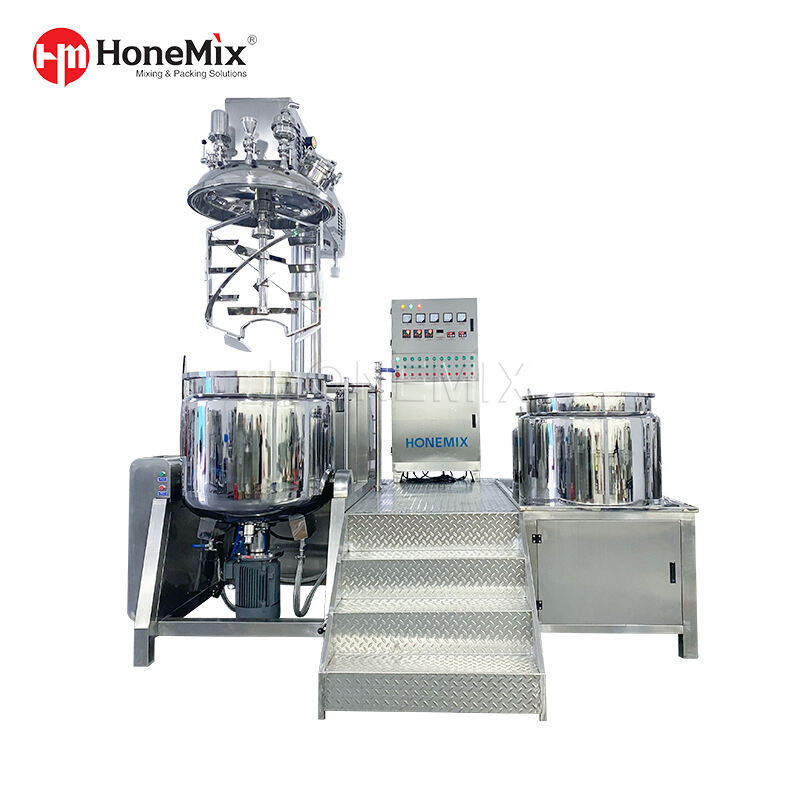Cream, the creamy dairy product that can be used a million ways (sauces to desserts!) and is one of those staples you just need in your fridge. Its smoothness and its taste can make any meal perfect, however it is too delicate to create if you are not careful sufficient or even worse do of course a basic burner. How else does cream get whipped to the perfect consistency at every patisserie and bakery, or even home kitchen for that matter? So, we take a deep dive into the world of cream-making devices and technology to see find all that goes on behind its creation.
Insight Into Cream Preparation Machinery
Cream preparation machinery consists of many machines, all designed to overcome different problems in the production process. Fundamentally, the process can be divided into pasteurization; homogenisation; chilling and whipping or churning as required for creating various forms of final product. Our pasteurizers make the cream safe to eat while keeping it tasting as good as what comes out of cows. Next, homogenizers distribute fat particles evenly so that they never separate during storage and have the same texture all through. Afterwards, the liquid cream is then pumped or treated to cooling tanks where it preserves in temperature prior by whipping (with specialty whippers) or churning.
Best Devices for Cream Making
While electric stand mixers (a workhorse in both professional and home kitchens) with the whisk attachment have long been called for to provide just enough power, answer a consistent fan speed of whatever newly-minted culinary apologist as yourself sees fit this hour. Simple creams can be whipped up in these cheap models, as their variable speed settings control the amount of air added to each batch for ideal fluffiness.
Industrial Cream Whippers: Targeted towards large commercial operations, industrial cream whippers are designed to make the process more automated and in most cases take a high volume of product while not sacrificing quality. These machines are also often temperature regulated and programmable so that your coffee tastes exactly the same with each batch.
Continuous Flow Homogenizers: Essential in commercial-scale production, these homogenizers subject cream to intense pressure as it passes through small nozzles, where fat globulesis fragmented and distributed for that creamy consistency. That last crucial step to having non-separating creams
How the Latest Equipment Is Transforming Cream Production
Growing technology has helped in the creation of machines that not only limit labor, but also protect and conserve cream longer than before. An example of this are ultra-high temperature (UHT) pasteurizers that allow cream to be treated at far higher temperatures for shorter periods, extending shelf life while eliminating the need for refrigeration post-harvest. Furthermore, the use of inline blending systems has now extended to incorporate an accurate dosing of additives such as sugar or stabilisers in order to simplify the production and guarantee a consistent product quality.
An Insight on the Fancy Tech for Churning Cream
Membrane Filtration Systems: High-tech membrane filtration systems are used to filter out bacteria and impurities, while simultaneously preserving the full flavor profile of cream. They provide an alternative to conventional heat treatment, horny up producers looking for more mild processing methods that are maintaining the product's natural properties.
Smart Monitoring & Control Systems : IoT ( Internet of Things ) technology is used in modern cream processing plants, which allows remote monitoring and controls like temperature - pressure - mixing speed etc. to be adjustementsed real time. This makes not only the grow-op more efficient but also maintains a consistent food safety standpoint.
Discovering Why Your Number One Milk And Cheese Taste The Way They Do
Though cream serves many purposes - from a seemingly simple task such as making homemade whipped cream to the more complex processes used in developing premium ice-cream bases and has its place across all industries, there is equally various machinery driving how we prepare our creams. Each device transports us inside the process at play, be it a modest home kitchen hand whisk or upper-tier membrane filtration system in a gleaming dairy plant—and with that peek comes an appreciation for both the science and craft behind every cream dollop.
In Conclusion
The lush cream we use in our morning cuppa comes from the raw milk, and it is indeed an example of human creativity and technological innovation. As consumer tastes change and the popularity of premium, eco-friendly products grow so too does the complexity of cream production lines. Ranging from artisanal creameries to multi-national dairy corporations alike, having the proper equipment can mean the difference between rendering those rich smooth textures and flavors that we associate with our favorite dairy novelties or not.

 EN
EN
 AR
AR
 BG
BG
 HR
HR
 CS
CS
 DA
DA
 NL
NL
 FI
FI
 FR
FR
 DE
DE
 EL
EL
 IT
IT
 JA
JA
 KO
KO
 NO
NO
 PL
PL
 PT
PT
 RO
RO
 RU
RU
 ES
ES
 SV
SV
 TL
TL
 ID
ID
 LV
LV
 LT
LT
 SR
SR
 SL
SL
 VI
VI
 SQ
SQ
 HU
HU
 TH
TH
 TR
TR
 FA
FA
 MS
MS
 GA
GA
 BE
BE
 HY
HY
 BN
BN
 KK
KK
 UZ
UZ

